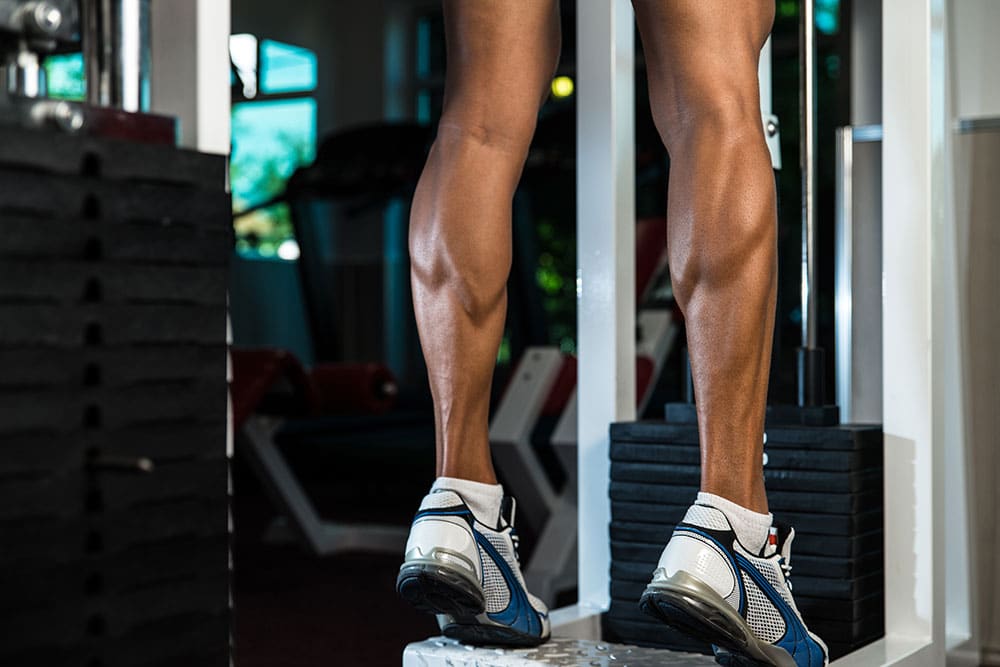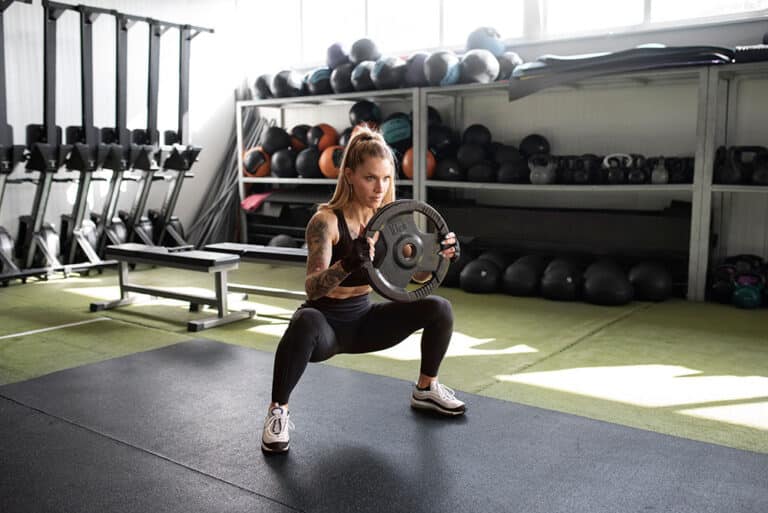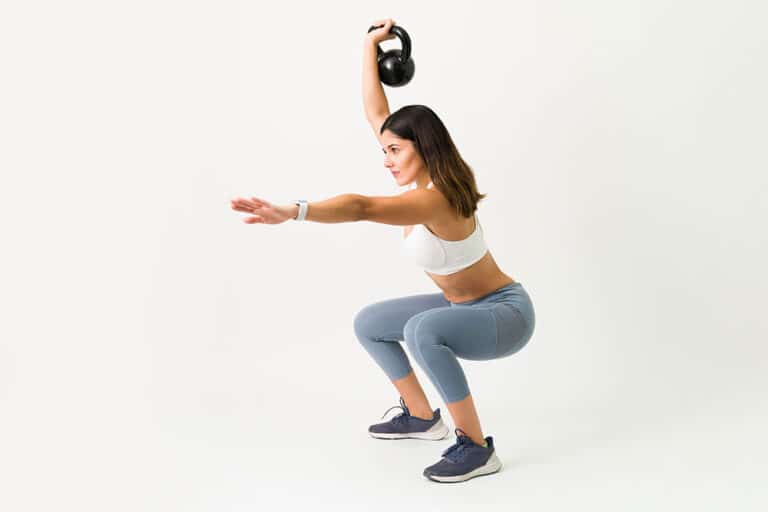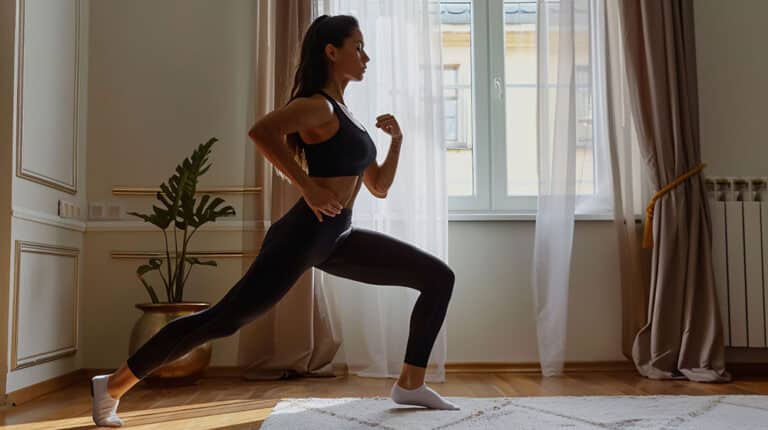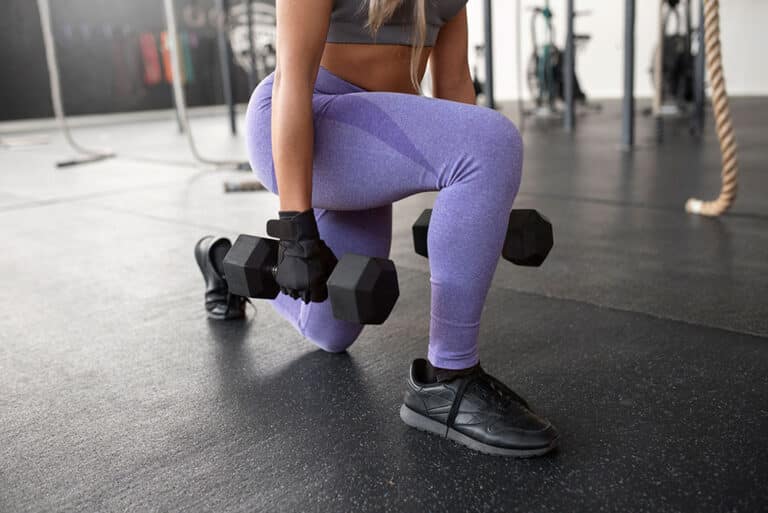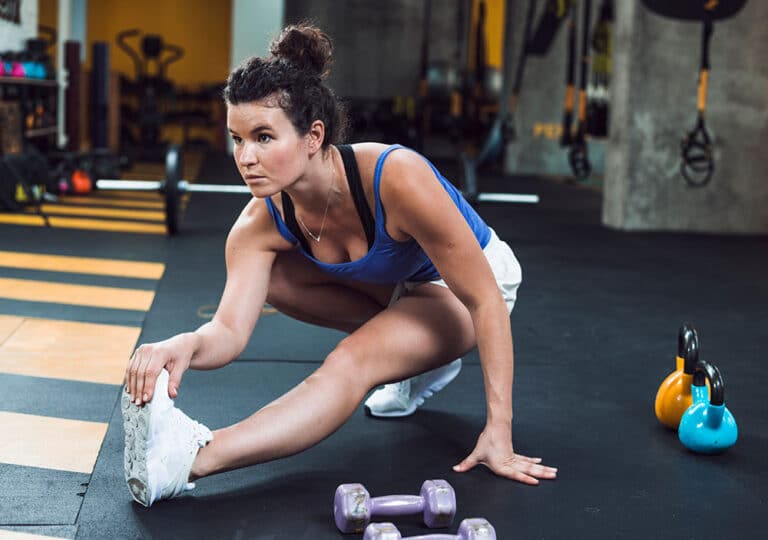Effective Calf Exercises
A strong pair of calves not only improves lower body strength but also enhances overall mobility and stability. Here are some effective calf exercises without weights that can be performed anywhere.
Calf Raises
Calf raises are a simple yet powerful exercise to enhance calf strength and definition. They primarily target the calf muscles (gastrocnemius and soleus) and can be easily performed without any equipment.
- Basic Calf Raises:
- Stand with your feet hip-width apart.
- Slowly raise your heels off the ground while balancing on your toes.
- Hold the raised position for a couple of seconds.
- Lower your heels back to the starting position.
| Exercise | Sets | Reps |
|---|---|---|
| Basic Calf Raises | 2 | 12 |
| One-Legged Calf Raises | 2 | 12-15 each leg |
| Seated Calf Raises | 2 | 12-15 |
- One-Legged Calf Raises:
- Stand on one leg while keeping the other leg slightly bent.
- Raise your heel off the ground.
- Hold for a moment, then slowly lower your heel.
- Repeat on the other leg.
- Seated Calf Raises:
- Sit on a chair with your feet flat on the floor.
- Raise your heels off the ground while keeping your toes connected to the floor.
- Lower the heels back to the floor.
For more variations and tips, check out our guide on how to do bodyweight squats.
Jumping Exercises
Jumping exercises are excellent for building calf muscles and enhancing explosive strength. These exercises often involve dynamic movements, which also improve cardiovascular fitness.
- Box Jumps:
- Find a sturdy box or platform.
- Stand with your feet shoulder-width apart.
- Bend your knees slightly and jump onto the box.
- Step back down and repeat.
- Jump Rope:
- Hold the jump rope handles with your hands at hip level.
- Swing the rope over your head and jump as it passes your feet.
- Perform continuous jumps for a set duration.
| Exercise | Sets | Duration |
|---|---|---|
| Box Jumps | 3 | 15-20 seconds |
| Jump Rope | 3 | 60 seconds |
- Lunge Jumps:
- Start in a lunge position with one foot forward and the other behind.
- Jump and switch legs in mid-air, landing in a lunge position with the opposite foot forward.
- Continue alternating legs.
For additional jumping exercises and techniques, visit our article on plyometric exercises for legs.
Incorporating these exercises into your routine can significantly improve calf muscle strength and endurance. Don’t forget to explore our other resources like quick leg workout no equipment for a comprehensive lower body workout.
Targeting Calf Muscles
Understanding how to target specific calf muscles is key to achieving well-defined and strong legs. This section focuses on two major muscles: the gastrocnemius and the soleus.
Gastrocnemius Focus
The gastrocnemius is the larger and more prominent muscle that forms the bulk of the calf. It is responsible for plantar flexing the foot at the ankle joint and flexing the leg at the knee joint. To effectively engage the gastrocnemius, calf raises are highly recommended. These can be performed using various methods, such as at the gym with machines, at home with dumbbells, or simply using body weight (American Sport and Fitness).
Calf Raises
| Exercise | Description | Equipment Needed | Reps |
|---|---|---|---|
| Standing Calf Raises | Stand on the edge of a step, lift your heels, and slowly lower back down | None | 3 sets of 15 |
| Bent-Knee Calf Raises | Similar to standing calf raises but bend knees slightly to focus more on soleus | None | 3 sets of 15 |
| Single-Leg Calf Raises | Perform on one leg at a time for increased difficulty | None | 3 sets of 10 each leg |
For more variations, check out our guide on [how to build leg muscle without weights].
Soleus Strengthening
The soleus muscle lies underneath the gastrocnemius and plays a crucial role in lower leg movement and stabilization. It aids in ankle flexion, which is essential for maintaining the stability of the ankle joint. Strengthening the soleus is important for activities such as walking, running, and jumping, and also contributes to maintaining good posture.
Soleus-Focused Exercises
| Exercise | Description | Equipment Needed | Reps |
|---|---|---|---|
| Seated Calf Raises | Sit with weights on your thighs, lift your heels, then lower back down | Weights (optional) | 3 sets of 20 |
| Wall Sit with Heel Raise | Perform a wall sit while lifting and lowering your heels | None | 3 sets of 15 |
| Toe Walks | Walk on the balls of your feet to engage the soleus | None | 2 minutes |
For added safety and effectiveness, always warm up before engaging in any [calf exercises without weights]. Pre-exercise stretching can also help prevent strains, especially if you are integrating other aerobic exercises like [jumping exercises] into your routine.
By focusing on both the gastrocnemius and soleus muscles, you can achieve balanced calf development and improve overall leg strength. Explore more [calf exercises without weights] and [tips for maintaining calf health] to keep your muscles in top condition.
Calisthenic Calf Workouts
Including calisthenic exercises in your routine is an effective way to strengthen and define your calf muscles. These bodyweight exercises require no equipment and can be performed anywhere. Two of the most efficient exercises for targeting the calves are box jumps and jump rope.
Box Jumps
Box jumps are a powerful plyometric exercise that can significantly enhance calf strength and explosiveness. This exercise involves jumping onto a platform or box and stepping back down, which engages the calf muscles along with other leg muscles.
To perform box jumps:
- Stand in front of a sturdy box or platform.
- With a slight bend in your knees, swing your arms and jump onto the box, landing softly on the balls of your feet.
- Step back down one foot at a time and repeat.
Box jumps not only target the calves but also improve agility and coordination, making them an excellent addition to any leg workout. For more intense calf exercises, explore our list of plyometric exercises for legs.
| Exercise | Repetitions | Sets |
|---|---|---|
| Box Jumps | 10-15 | 3-4 |
Jump Rope
Jump rope is an effective and fun way to enhance calf strength and endurance. The repetitive jumping motion activates the gastrocnemius and soleus muscles, making it an excellent calf workout.
To get the most out of your jump rope session:
- Hold the jump rope handles at your sides with the rope behind you.
- Swing the rope over your head and jump as it passes under your feet.
- Maintain a steady rhythm and jump using the balls of your feet, keeping your knees slightly bent.
Jump rope is a versatile exercise that can be easily modified to increase intensity, such as alternating between single-leg jumps and double-unders. For more tips on effective calf workouts, visit our article on how to build leg muscle without weights.
| Exercise | Duration | Sets |
|---|---|---|
| Jump Rope | 2-3 minutes | 3-5 |
Incorporating these calisthenic exercises into your fitness routine can help you achieve stronger, more defined calves without the need for weights. For additional calisthenic exercises and leg workouts, explore our resources on quick leg workout no equipment and morning leg exercises.
Injury Prevention and Calf Health
Importance of Strong Calves
Strong calf muscles are pivotal for various everyday activities such as walking, running, and jumping. These muscles support a significant load from the lower body and facilitate movements including flexing the feet and rotating the ankles. Strengthening the calves can enhance jumping height, increase running speed, and reduce the risk of injuries (TODAY). Moreover, strong calves improve balance, stability, and overall leg strength, making them essential for a comprehensive lower-body workout. It’s important to incorporate [calf exercises without weights] into your routine to ensure these muscles are not neglected.
Calve Strain Prevention
Prevention of calf strains is crucial for maintaining calf health. The calf muscles consist of two primary muscles: the gastrocnemius and the soleus. The gastrocnemius is more prone to strains and injuries because it crosses two joints (the knee and ankle), engaging in various everyday movements. Strengthened gastrocnemius muscles provide forward propulsion and play a critical role in lifting the heels off the ground (TODAY).
Here are some key strategies for preventing calf strains:
- Warm Up Properly: Always start your workout with a thorough warm-up to prepare your muscles for the exercises.
- Regular Stretching: Incorporate stretching, especially calf stretches, into your routine to maintain flexibility.
- Progressive Training: Gradually increase the intensity and duration of your workouts to avoid overloading the calves.
- Balanced Workouts: Combine calf exercises with other lower-body exercises like bodyweight squats to ensure balanced muscle development.
For more information on incorporating leg exercises into your routine, check out our articles on how to build leg muscle without weights and leg strengthening for runners.
| Strategy | Benefits |
|---|---|
| Warm Up | Prepares muscles, reduces injury risk |
| Regular Stretching | Maintains flexibility, prevents stiffness |
| Progressive Training | Avoids overload, promotes safe strength gains |
| Balanced Workouts | Ensures overall leg strength, reduces imbalances |
By focusing on these strategies, you can maintain strong and healthy calves, ultimately preventing strains and enhancing your overall performance in various physical activities. For more tips and exercises, explore our related articles on bodyweight lunge variations, quick leg workout no equipment, and tips for morning leg exercises.
Varied Calf Workouts
Including a variety of calf exercises without weights in your routine can enhance strength, endurance, and muscle definition. Here we explore two effective exercises you can do anywhere: lunge jumps and calf stretches.
Lunge Jumps
Lunge jumps are a powerful plyometric exercise that engages the calves along with other lower body muscles. This exercise not only helps in building calf strength but also improves overall leg power and explosiveness. Lunge jumps are easily incorporated into your workout routine and can be done without any special equipment.
How to Perform Lunge Jumps:
- Start: Stand with feet shoulder-width apart.
- Lunge: Step one leg back into a lunge position, ensuring your front knee is directly over your ankle.
- Jump: Push off the ground explosively, switching your legs mid-air.
- Land: Land softly in a lunge position with the opposite leg forward.
- Repeat: Perform in a controlled rhythm, maintaining proper form.
| Exercise | Sets | Reps |
|---|---|---|
| Lunge Jumps | 3 | 15 each leg |
Performing lunge jumps on an elevated surface like a step can increase the intensity and engage the calf muscles further (Tom’s Guide). Ensure you are adequately warmed up to prevent calf muscle strain (Today). For more leg exercises, visit our guide on [bodyweight lunge variations].
Calf Stretches
Stretching is essential for maintaining flexibility and preventing injuries. Calf stretches are crucial for anyone who frequently engages in physical activities like running or jumping. These stretches help improve calf muscle flexibility, reduce the risk of cramping, and enhance overall lower body mobility.
How to Perform Calf Stretches:
- Wall Stretch:
- Start: Stand facing a wall, with your hands pressed against it at shoulder height.
- Stretch: Step back with one leg, keeping it straight with the heel on the ground.
- Hold: Bend your front knee and lean towards the wall.
- Repeat: Hold the stretch for 20-30 seconds and switch legs.
- Seated Stretch:
- Start: Sit on the ground with your legs extended in front of you.
- Stretch: Loop a towel around the ball of one foot and gently pull it towards you.
- Hold: Maintain the stretch for 20-30 seconds and repeat with the other leg.
| Stretch | Duration |
|---|---|
| Wall Stretch | 20-30 seconds each leg |
| Seated Stretch | 20-30 seconds each leg |
Calf muscles play a vital role in supporting lower body activities like walking, running, and jumping (Today). Including calf stretches in your routine can enhance performance and minimize injury risks. For more tips, read about our recommendations on [leg exercises while traveling].
Calf Definition and Strength
Standing Calf Raises
Standing calf raises are a fundamental exercise for improving calf definition and strength, particularly favored for their simplicity and effectiveness. This variation of calf raises targets the gastrocnemius muscle, the largest part of the calf.
To perform standing calf raises:
- Stand with feet hip-width apart, and your toes pointed forward.
- Slowly rise onto the balls of your feet, lifting your heels as high as possible.
- Hold the top position for a moment, then slowly lower your heels back down.
It’s recommended to aim for 3 sets of 15-20 repetitions. For added difficulty, perform the exercise on an elevated surface, like a step, allowing a greater range of motion. Alternatively, try incorporating other [calf exercises without weights] like jump rope or mountain climbers (Livestrong).
| Exercise Variation | Target Muscle |
|---|---|
| Standing Calf Raises | Gastrocnemius |
| Elevated Calf Raises | Soleus and Gastrocnemius |
For enthusiasts wanting to diversify their routines, our articles on [bodyweight lunge variations] and [how to build leg muscle without weights] offer additional insights on effective leg exercises.
Leg Press Calf Raise
Leg press calf raises offer a unique advantage by allowing the individual to increase the resistance without compromising balance. This variation places additional load on the calves, facilitating muscle growth and definition.
To perform leg press calf raise:
- Sit on a leg press machine with feet placed shoulder-width apart on the platform.
- Ensure the balls of your feet are positioned at the edge of the platform.
- Press the weight upwards by extending your ankles and lifting your heels.
- Hold the top position, then lower your heels back down slowly.
Including weights like 6kg dumbbells can further amplify the challenge (Tom’s Guide).
For further guidance on bodyweight exercises and diversifying your leg routine, check out our articles on [[quick leg workout no equipment]] and [[morning leg exercises]].
Ensuring the inclusion of varied calf workouts not only promotes muscle growth and definition but also enhances overall leg strength.
- About the Author
- Latest Posts
Johnnie D. Jackow Sr., the founder and CEO of Total Body Fitness, Worldwide, has a long-standing career in the fitness industry. He began as a certified personal trainer in the mid-90s and soon after authored his first weight loss book in 1998. This led to the launch of Total Body Fitness, Nationwide in the USA at the same time. Johnnie gained recognition as the fitness guru of his time, running infomercials on local TV late at night in Houston, Texas. Over the years, he has helped more than 40,000 individuals from all over the world achieve their health and fitness goals. With over 60,000 hours of documented training in integrative functional medicine, he completed his PhD in human physiology in 2010. His primary objective is to assist people in reaching their health and fitness goals through alternative approaches rather than relying solely on conventional medicine and pharmaceutical drugs. Today, with almost three decades of experience under his belt, Johnnie continues to be a leader in health and fitness.

